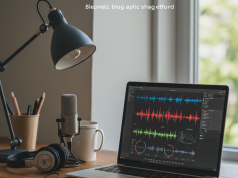We live in a fragmented attention economy. People check their phones 150+ times daily, but each interaction lasts mere seconds.
These brief digital touchpoints are what Google calls “micro-moments” – those tiny windows when consumers turn to devices to act on a need.
They happen constantly throughout the day. Someone checks a fact during dinner conversation. A shopper compares prices while standing in a store aisle. A traveler searches for nearby restaurants while walking through an unfamiliar neighborhood.
These moments might be brief, but they’re incredibly powerful. They represent genuine intent and receptiveness to the right message.
The Four Critical Types of Micro-Moments
Not all micro-moments are created equal. Google identifies four particularly valuable categories that marketers should understand.
“I want to know” moments happen when someone seeks information but isn’t necessarily looking to buy. They’re researching, learning, curious.
“I want to go” moments occur when people search for local businesses or consider products available nearby. These carry strong local intent.
“I want to do” moments involve seeking instructions or guidance. Someone wants to accomplish something and needs help figuring out how.
“I want to buy” moments represent immediate purchase intent. The consumer has decided to buy and is now finalizing their decision about what or where.
Each type requires different content and approaches to effectively capture attention.
Why Micro-Moments Matter for Inbound Marketing
Traditional inbound strategies often focus on longer-form content and extended engagement. These remain valuable, but miss crucial opportunities.
According to Think with Google, 91% of smartphone users look up information while in the middle of another task. These micro-moments represent opportunities to meet customers exactly when they need you.
Mobile has fundamentally changed how purchase decisions happen. Rather than a linear funnel, we now see fragmented journeys made up of dozens of micro-moments spread across devices and time.
Brands that understand and optimize for these moments gain competitive advantage. They meet customers at precisely the right time with exactly the right content.
Identifying Your Customers’ Key Micro-Moments
Every business has unique micro-moments that matter most for their audience. Identifying yours requires both data and empathy.
Study your analytics to find patterns in mobile searches, quick site visits, and specific question-focused queries. These often indicate micro-moment opportunities.
Talk directly with customers about how they use their devices throughout their purchase journey. When do they pull out their phone? What triggers these checks?
Map the customer journey with special attention to moments of hesitation or information seeking. These represent critical micro-moments where you can provide value.
At InboundMarketo.com, we’ve found that brands identifying just five key micro-moments can dramatically improve conversion rates through targeted content.
Creating Content Optimized for Micro-Moments
Micro-moment content differs from traditional inbound assets. It must deliver value immediately, with no preamble or extensive background.
Focus on answering one specific question or solving one specific problem. Clarity trumps comprehensiveness in these moments.
Format content for easy mobile consumption. Use short paragraphs, prominent headings, and visual elements that communicate quickly.
Load speed becomes absolutely critical. According to research from Portent, conversion rates drop by an average of 4.42% with each additional second of load time.
Consider creating dedicated micro-content: quick videos, concise guides, simple tools, and immediate answers that deliver value in seconds rather than minutes.
Optimizing for Local Micro-Moments
“Near me” searches have grown exponentially in recent years. These represent powerful micro-moments with high conversion potential.
Ensure your Google Business Profile remains complete, accurate and frequently updated. This powers your visibility in local micro-moments.
Use location-specific landing pages that immediately answer location-based questions and provide actionable next steps.
Consider location-based alerts or offers that activate when customers enter relevant geographic areas, creating timely micro-moment opportunities.
Measuring Micro-Moment Success
Traditional metrics may miss the impact of micro-moment optimization. Develop specific KPIs that capture these brief but valuable interactions.
Track micro-conversions like quick answers viewed, store locator uses, or product comparison tool engagements that indicate successful micro-moment content.
Examine bounce rates differently. A high bounce rate on micro-moment content might actually indicate success if visitors found exactly what they needed quickly.
Monitor cross-device journeys to understand how micro-moments on mobile influence later conversions on other devices.
Micro-Moments in Different Industries
E-commerce businesses should focus on comparison micro-moments. Shoppers frequently check prices, features, and reviews before completing purchases.
Service businesses benefit from addressing “how to” micro-moments. Providing quick answers builds trust that leads to service inquiries.
B2B companies often see value in knowledge-verification micro-moments. Buyers check specific facts or claims during complex purchase decisions.
Healthcare organizations should optimize for symptom-checking micro-moments, when concerned patients seek quick, reliable information.
The Technology Enabling Better Micro-Moment Marketing
Progressive web apps deliver app-like experiences without requiring downloads, perfect for micro-moment optimization.
Voice search optimization becomes increasingly important as more micro-moments happen through voice assistants rather than typing.
Artificial intelligence helps predict micro-moments before they happen, allowing brands to prepare relevant content in advance.
AMP (Accelerated Mobile Pages) technology ensures your content loads instantly when micro-moments occur.
Common Micro-Moment Marketing Mistakes
Many brands create content that’s too comprehensive for micro-moments. Visitors seeking quick answers encounter walls of text instead.
Others fail to optimize for mobile, creating friction during these critical brief interactions.
Some companies miss the emotional context of micro-moments. Understanding not just what information someone seeks but how they feel while seeking it improves effectiveness.
Many marketers neglect to connect micro-moment content with broader inbound journeys, missing opportunities to nurture relationships after these brief interactions.
Building a Micro-Moment Strategy
Start by conducting a micro-moment audit. Identify gaps between customer needs in critical moments and your current content offerings.
Prioritize the highest-impact micro-moments based on volume and commercial intent.
Develop a content creation calendar specifically for micro-moment assets, separate from your broader inbound content strategy.
Create clear ownership for micro-moment optimization within your marketing team to ensure consistent focus.
Conclusion
Micro-moments represent the new frontline of inbound marketing. These brief windows of opportunity occur throughout the customer journey, offering chances to deliver exactly what customers need precisely when they need it.
By understanding, identifying, and optimizing for the specific micro-moments that matter most to your audience, you can create more effective inbound marketing that meets modern consumer expectations.
The brands that succeed in tomorrow’s digital landscape will be those that master both traditional inbound marketing and these critical micro-moments, creating seamless experiences that satisfy customer needs at every scale, from momentary interactions to long-term relationships.




